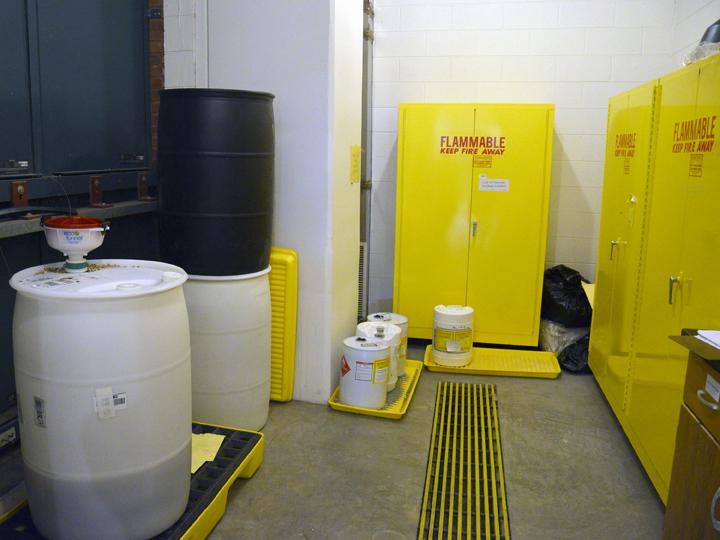
Appalachian State’s Academic Affairs spent approximately $2,500 on hazardous waste disposal for the university’s chemistry department during the 2012 calendar year, said Jennifer Maxwell, the resource conservation specialist for the office of sustainability.
Chemical hygiene officer for the chemistry department Sammye Sigmann said she monitors all aspects of safety in the chemistry department, handling safety training, incident reports and looking for room to improve what the department does to ensure safety.
Sigmann said the chemistry department must meet federal, state and local hazardous waste regulations.
Appalachian is considered a Conditionally Exempt Small Quantity Generator by the Environment Protection Agency. This means the university does not generate enough hazardous waste to be required to meet all the regulations, Sigmann said.
The requirements for this designation include identifying all the hazardous waste generated may not accumulate more than 1,000 kilograms of hazardous waste at any time, must ensure that hazardous waste is delivered to a person or facility that is authorized to manage it, according to epa.gov.
Sigmann said it is good to be in the CESQG designation because it allows the university to set up hazardous waste pickup twice a year, once in the fall and once in the spring.
Because the pickup is twice a year, the department collects hazardous waste in appropriately labeled containers after it is used and takes it to a temporary location in a stock room until they can be brought to a room designed for hazardous waste, Sigmann said. They handle all aspects of characterization and DOT packing.
“[The room is] a blowout room,” Sigmann said. “It has metal panels in back of the wall so that if you have an explosion it blows that door out and keeps the integrity of the building.”
The room also has a drain that leads to a catch basin underneath where hazardous waste would be caught if a spill or explosion did happen, preventing it from reaching the sewers, Sigmann said.
Sigmann said with the CESQG designation she could petition the Town of Boone for written permission for the department to put certain chemicals down the drain if they are rendered unharmful. But, Boone ultimately gets to decide what can be put down the drain.
Sigmann said the department has written permission from Boone that allows the chemicals from two specific labs to go down the drain after the pH has been neutralized. The third permit that the university has is for small amounts of alcohol disposal.
But, there are plans in place for spills.
“We do have a lot of highly toxic chemicals, suppose one got dumped in the sink, we would call and say ‘shut down the plant’ so that it didn’t kill the ‘bugs’ that kill the waste and somehow they can shut off the flow,” Sigmann said. “The likelihood of that happening is very small, but you plan for those things.”
Sigmann said that chemicals are sometimes mixed in containers as they are accumulated in the lab.
“Since we are knowledgeable of chemical behavior, as long as you aren’t adding incompatible chemicals, it’s no worse than a bottle of chemicals sitting there,” Sigmann said. “Where you run into trouble is when you don’t label well so you don’t know if there is an incompatible thing going on.”
Story: STEPHANIE SANSOUCY, Senior News Reporter
Photo: BOWEN JONES, Intern Photorapher
